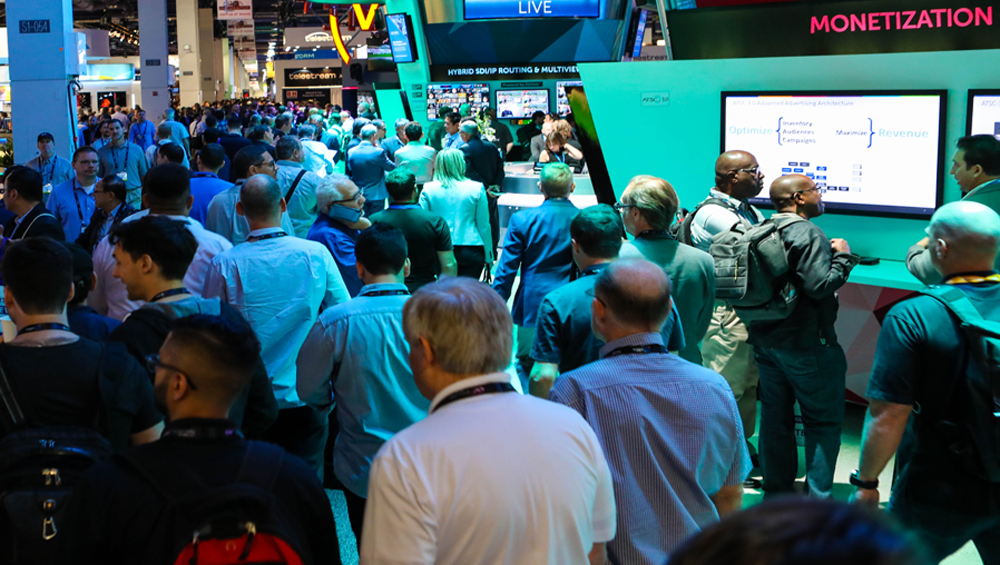
Tech Vendors Still Fighting Headwinds

LAS VEGAS — Changing consumer viewing habits that have roiled broadcasters’ traditional business models are also continuing to make life difficult for the broadcast technology market, said major vendors who gathered Sunday in Las Vegas before the NAB Show.
Speaking at the 2019 Devoncroft Summit in the panel session “Technology Supplier C-Suite: Strategies for an Evolving Market,” the top executives of Arista Networks, Imagine Communications, MediaKind and Grass Valley parent Belden spoke of a tough selling market as broadcasters try to maintain an eroding linear TV business while investing significant dollars in new digital platforms that are still largely unprofitable.
“I think our customers are in a really tight spot, where technology has fragmented the traditional goldmine that is the linear broadcast feed,” said Imagine CEO Tom Cotney. “They’re having to rely on technology providers to reaggregate their viewing community, and cut costs, and oh by the way, spend more money on content to compete. So it’s a pretty challenging space.”
Belden Chairman-CEO John Stroup was more blunt. “At the end of the day what we need, and what our investors worry about, is … for our customers to make money in the part of their business that’s growing,” he said. “That’s the issue. All of our customers are making money off the part of their business that’s shrinking, and they’re losing massive amounts of money on the part that’s growing. If you guys could figure that out, that would be really helpful to us.”
That remark drew some laughs from the audience, prompting Devoncroft Partners founder Joe Zaller to joke that “our goal is to be the Netflix of market research in this industry.”
To which Stroup had a quick rejoinder: “I would not do that — unless you find a big investor.”
Netflix, said Stroup, has proven an old business model to be still be true: “that customers love products that are sold to them for below their cost.”
While Netflix may have the cash to spend far more on digital content than it’s pulling in, broadcasters don’t. Stroup noted that uncertainty in the marketplace over how much consumers will actually pay for content, either through subscriptions or advertising revenue, have “created a lot of confusion, and it’s going to drive the likelihood of people of overpaying for football rights again.”
Overall, Stroup said that Grass Valley’s live production business is doing very well while its playout business has been more difficult. Out of all of Belden’s diverse holdings, he said that Grass Valley “is by far the most difficult business for us to forecast compared to any other businesses that we have. So, for us the challenges have less to do with operating the companies well, and more to do with how we manage the expectations of our investors.”
Arista Networks, which makes IP switches used by major cloud computing players, has found a foothold inside stations as broadcasters adopt IP networking technology based on the SMPTE 2110 standard. Andy Bechtolsheim, its founder and chairman, said that was an application Arista hadn’t originally targeted. He noted that one-third of enterprise computing workflows run on the cloud today, and said that’s probably where media companies should look as launch new digital businesses.
“It’s lower cost and much more efficient to host these things in the cloud environment,” Bechtolsheim said.
Angel Ruiz, CEO of video processing supplier MediaKind, which was spun out from Ericsson earller this year, is optimistic long-term about the broadcast technology market. He noted that Ericsson is too, which is why it still holds a 49% stake in MediaKind after divesting it.
“I still see the amount of growth,” said Ruiz. “I think the video industry is going to go through much of what I went through with the wireless industry some year ago. I just see the amount of video in the networks will continue to accelerate, and that’s just going to propel everyone forward.”
That said, MediaKind is “still very challenged today by a very fragmented industry,” said Ruiz, with “very long” sales cycles in the platform area and shorter cycles in its compression business. He said that in general, the long sales cycles and a very competitive market are making life tough on smaller companies.
While business may be getting tougher for smaller players, no one on the panel expressed any desire in acquiring new broadcast businesses. Belden has been the biggest consolidator, sweeping up Miranda, Grass Valley and Snell Advanced Media (SAM) in the last decade, and the acquisition of SAM has gone particularly well. But he isn’t currently shopping.
“The challenge we have is how much of our capital do we want to devote to the media vertical?” said Stroup. “And that’s what we really have to think about. Because our investors view our vertical diversification as an advantage, and I think quite frankly, that increasing the amount of exposure to the media industry given all the uncertainty around our customers right now is a challenge for us.”
Cotney was in agreement; Imagine’s private-equity ownership hasn’t done any major deals since acquiring Harris Broadcast four years ago.
“I’ve spent the last year that I’ve been on board remapping ourselves against the reality of the market, where a big part of it is declining,” said Cotney. “So you kind of have to swallow hard before you put more capital into it.”
For more NAB Show coverage, click here.


































Comments (0)